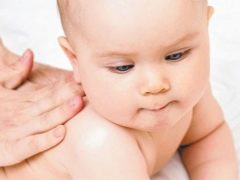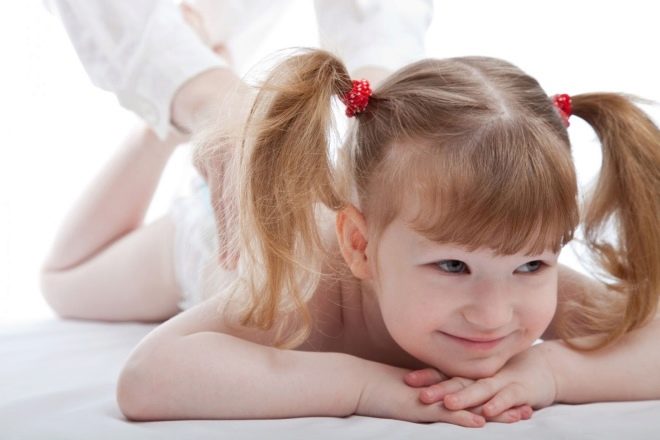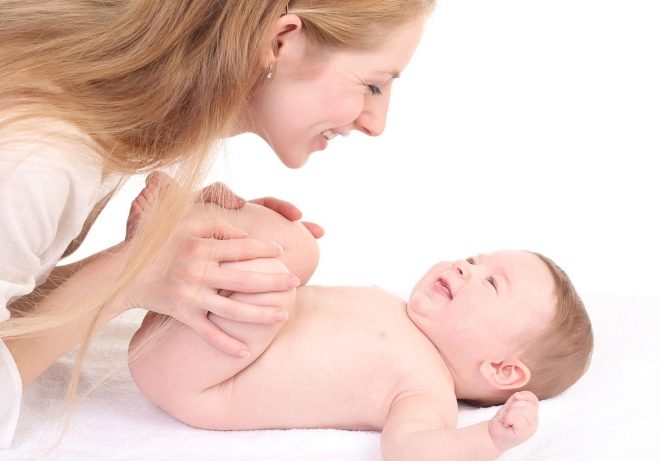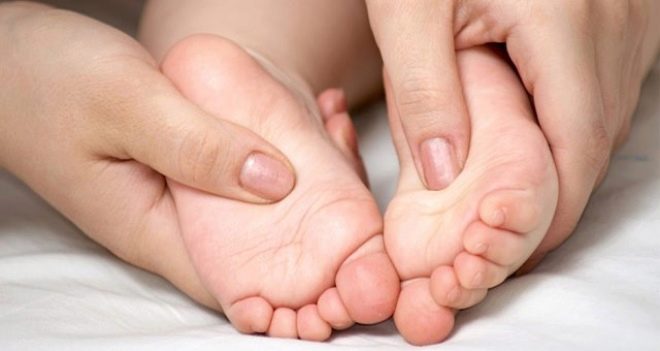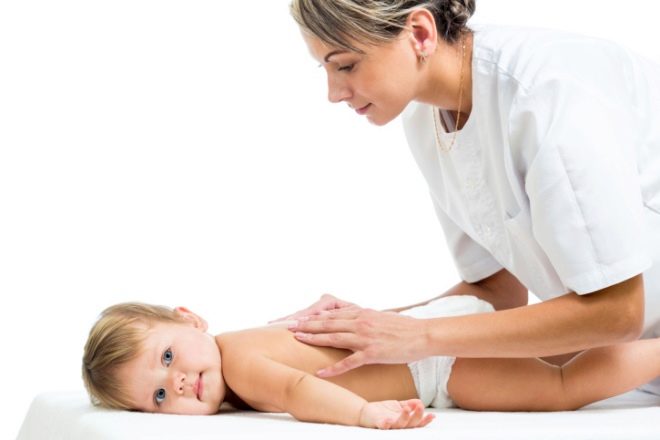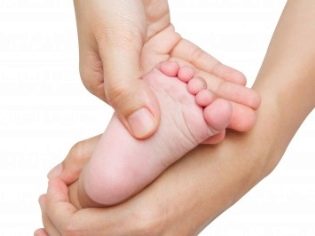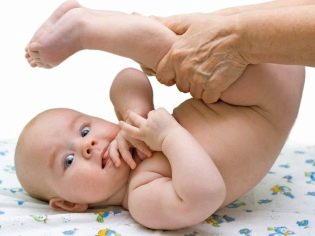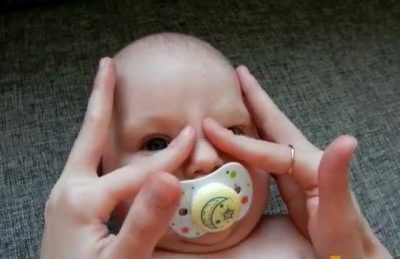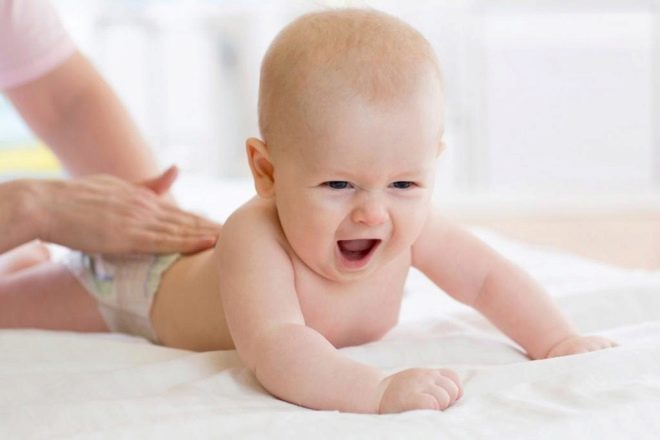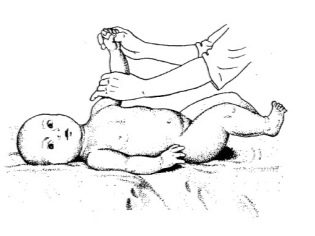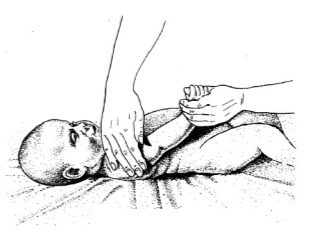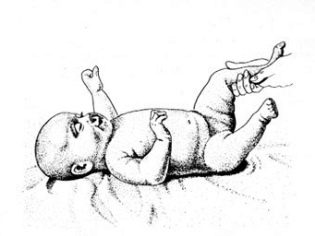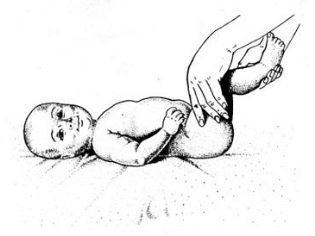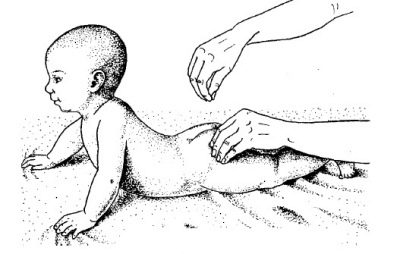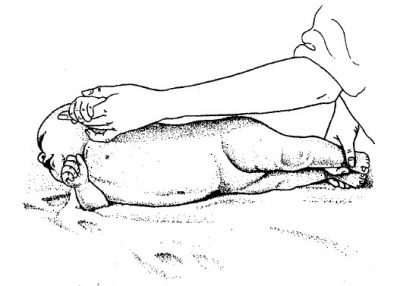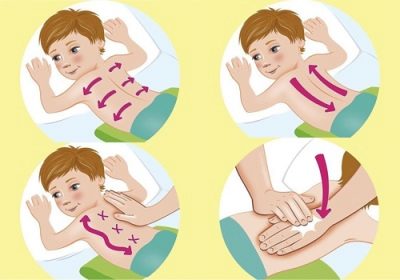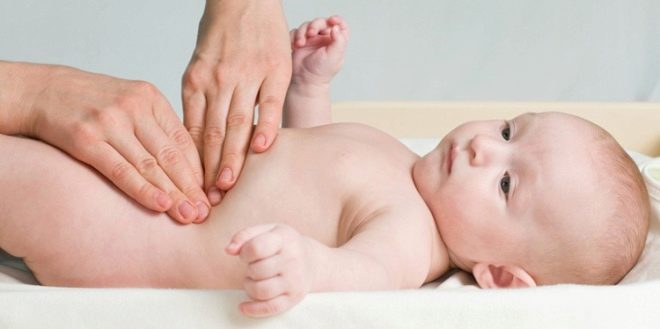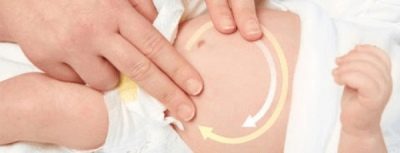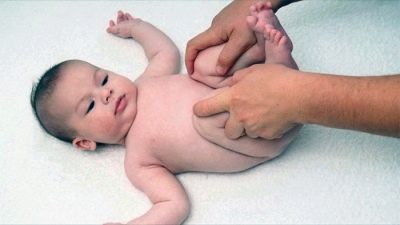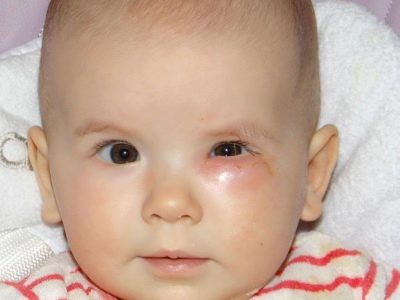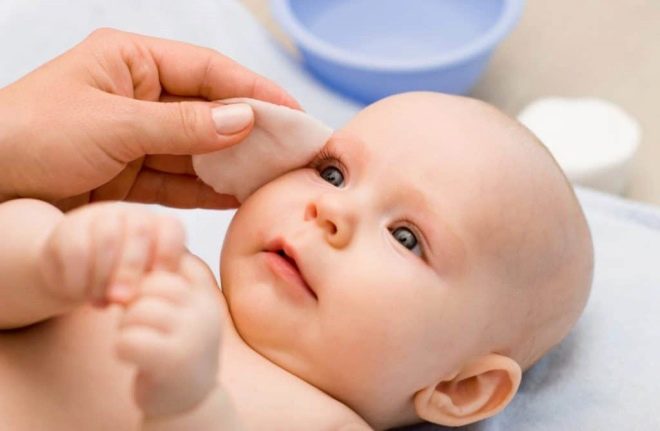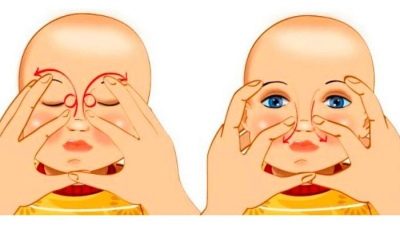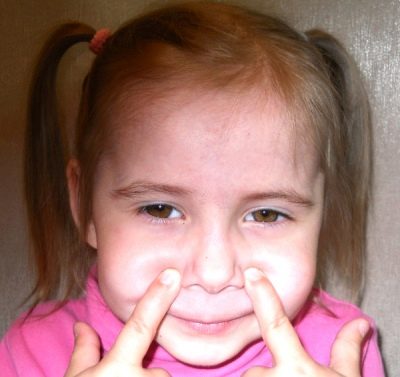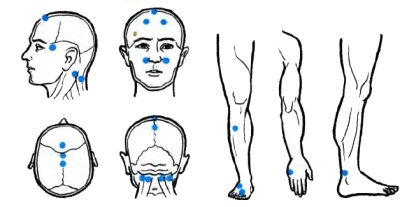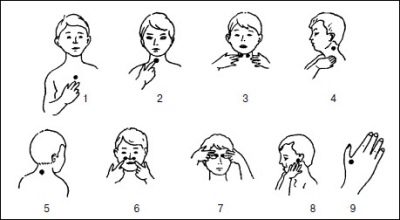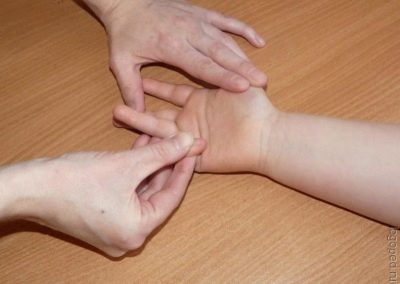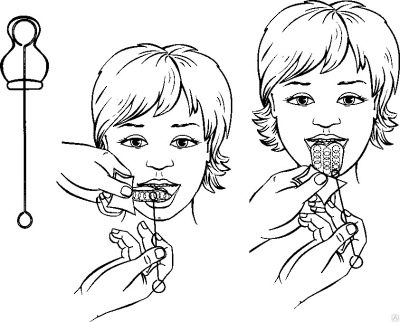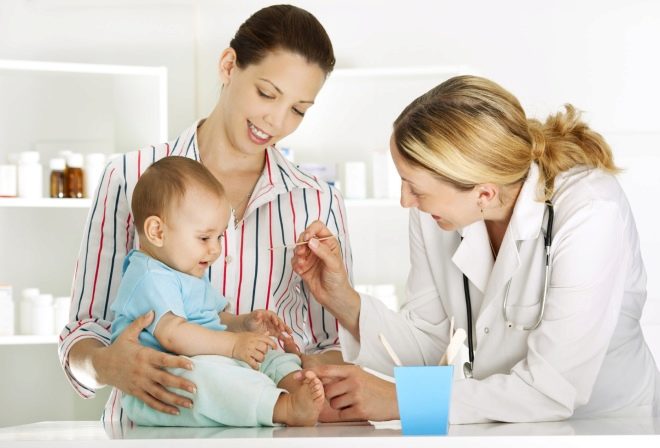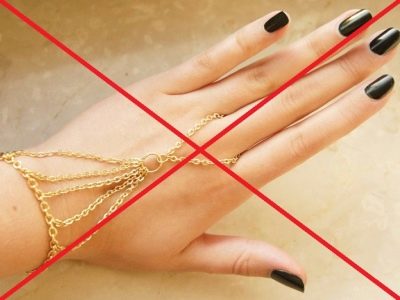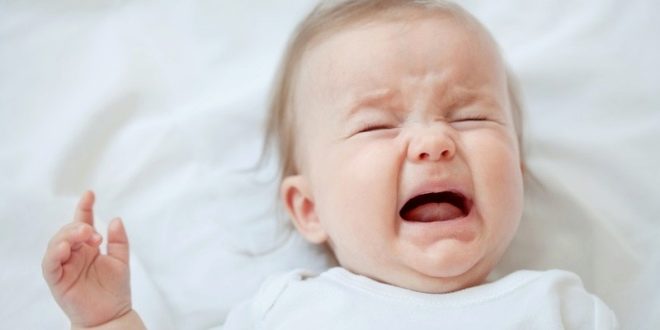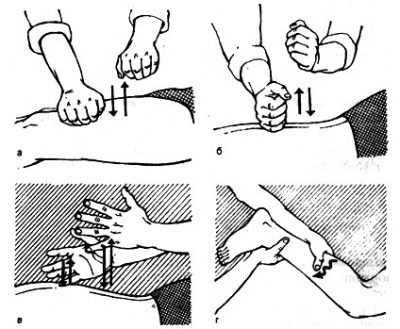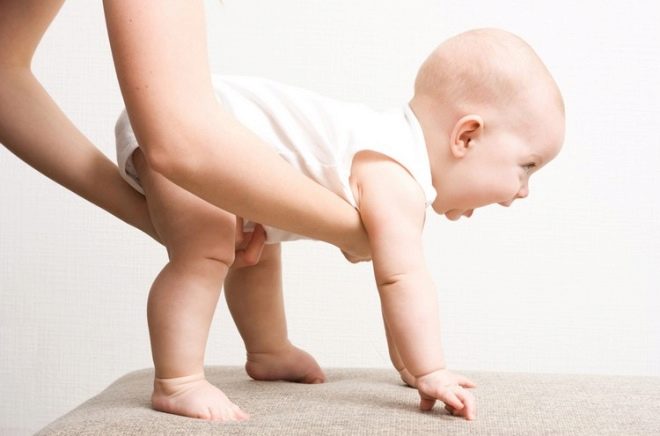Baby massage: types and techniques of performance
Massage is known to mankind for several millennia. There are many types of such effects on the human body - from traditional to exotic (hot, Thai, stone, African, etc.). Baby massage is always considered apart: it is a special kind of treatment and prevention that helps parents in a wide variety of situations. In this article we will tell you how baby massage can be and how to carry it out on your own.
Benefits of procedures
Massage is an indispensable helper for moms and dads who want to raise a healthy baby. It is necessary for a small child to remove the hypertonicity of the muscles, which is physiological, because the baby is not in the most comfortable position for many months in the mother's womb. A child is born with arms and legs, which are not fully unbendable; he hardly opens his fists. A newborn needs the help of parents in removing muscle tone so that he can grow and develop physically more harmoniously.
Older children need massage to support the musculoskeletal system and the muscular system, since they carry enormous loads in the process of intensive growth of the child. Massage improves local blood circulation, increases blood flow to the skin, improves metabolism, and contributes to the development of the nervous system, because when massaging certain nerve receptors are intensely excited. Due to this, massage for hyperactive babies has a calming effect, and for sluggish and sluggish toddler - tonic.
If a child is naughty, eats badly, doesn’t sleep well, massage is often ill, it will help to improve his health. A properly conducted session will help with a variety of problems of an early age: regurgitation, colic, constipation, dacryocystitis, muscle hypotonia, and rhinitis.
Wellness massage is shown to all healthy children, because it strengthens children's immunity, and this, to be honest, is the main task of any loving parent.
Massage for a baby is not only a treatment-and-prophylactic procedure, but also communication with parents, because in the course of the session he feels tactile contact with his mother, who is so necessary for him in the first year of his life. This communication has a beneficial effect on the development of the emotional, mental and intellectual spheres of the personality of the child.
Kinds
Massage for the child is carried out in the same way as the massage for adults, but only all the effects are more delicate, gentle and neat.
Depending on the purpose of the massage, there are several main types of massage.
Medical
This type of impact, as the name implies, is used when a baby has certain diseases that require conservative treatment, which includes massage procedures. Often prescribed for diseases of internal organs and the nervous system.
Orthopedic
This massage is very common, it refers to the professional effects and is indicated if the child has problems with the musculoskeletal system. It is also carried out by professionals or parents themselves, previously instructed by professionals, under their control.It is indicated for flatfoot, hip dysplasia, scoliosis, distortion, kyphosis and lordosis, valgus and varus deformities of the feet.
General (classic)
This type of massage effect has many other names. It is called fortifying or strengthening. This is the kind of procedures that can and should be done for children at almost any age at home. Shown even perfectly healthy kids. But especially the children of infancy, easily excitable and inhibited kids, often ill children, need it. In turn, the overall massage is relaxing and toning.
Dotted
This type of massage came to us from the East. Acupuncture points, the stimulation of which is provided by the method, affect the work of certain organs and systems, on the brain, nervous system. It is rather difficult for a layperson, however, some types of acupressure can still be performed at home, for example, a massage for a child with a headache or with a cold.
Emendic
This type of impact is one of the most difficult - manual procedures. It requires the masseur excellent knowledge of the biological points on the patient's body. The peculiarity of the emendic massage is to stimulate the correct lymph flow, due to which the body is cleansed. Children are massaged exclusively by experienced manual therapists, at home, if improperly performed, it can be harmful.
Drainage (percussion)
This type of massage is used to treat respiratory diseases. It is used in situations where you need to facilitate the discharge of sputum, ease cough, help your child cope with a wet cough during the recovery phase after suffering flu or ARVI. At home, carried out quite successfully, is simple and effective.
Dacryomassage
This is the unofficial name for the massage of the lacrimal canals. It is necessary for children with dacryocystitis - inflammation of the lacrimal sac and obstruction of the nasal pathways. It can be carried out by specialists, but more often it is recommended to conduct independently, at home, children of any age.
In addition, massage is divided into therapeutic, prophylactic and therapeutic and prophylactic. So, dacryomassage belongs to the category of treatment-and-prophylactic, because it can be done both in case of illness and in the prevention of relapse in the future. A classic general massage does not apply to therapeutic, it is only prophylactic. Thus, massage for cerebral palsy, dysplasia, umbilical hernia, inguinal hernia, scoliosis, etc. are subtypes of therapeutic massage, whose task is to help in healing, improve the condition of the sick child.
Technique of
Since massage can be useful to parents in a wide variety of situations, it is necessary to master the techniques of the most common and allowed for home use species.
Tonic
Purpose: contribute to the physical and emotional development of the child, the development of new motor skills and abilities, the removal of hypertonia, increased muscle tone during hypotonia, the prevention of disorders in physical development.
What you need: baby cream or massage oil, equipped massage place (table or changing table), paper towel, wet wipes.
The pattern of exposure is as follows.
Stage One - on the back
The child should be placed in the supine position. Once he gets used to the temperature of the air naked, you should begin to perform a classic massage starting from the upper extremities. Alternately, each hand is easily massaged, first stroked, and then rubbed in the direction from the fingers to the shoulder. Armpit can not be massaged.
Stroking movements and massage the legs - from the fingers to the heel and above to the groin. Avoid rubbing and stroking the inner thigh, groin area. The ankle is massaged with two fingers, easily flexing the muscle.Knee joint and popliteal cavity massage is prohibited.
The baby’s chest is rubbed with an open palm in the direction from the center of the sternum to the ribs, and the tummy is massaged with light circular movements, describing “circles” around the navel.
Stage Two - on the belly
Turn the child on his stomach, let him lie down for a while, get comfortable in a new position in space. Begin to massage the legs. Gently pat the back of the legs and thighs, go to the buttocks, complete their rubbing with light patting or pinching movements. The back is massaged excluding effects on the spinal column and lumbar region.
The long back muscles are easily rubbed, and then rubbing and kneading are used. The massage is completed with coups on both sides from a prone position to stimulate the abdominal muscles and lateral muscles.
The collar zone is massaged only for children older than 3 months, while limited to stroking. There should be no pressure, "sawing", percussion technique when massaging the neck.
The full body massage is completed by turning back onto the back, with soothing strokes of the whole body.
Duration of the session: start from 2-3 minutes and gradually bring the massaging time to 15 minutes in children up to six months, up to 30 minutes - for children from 6 to 8 months, up to 40 minutes - for children from 9 to 12 months.
Special recommendations: do not perform a general strengthening massage in the evening; it will be difficult for a child to fall asleep due to over-stimulation of the nervous system. It is best to conduct such a session in the morning.
Relaxing
Objective: to promote muscle relaxation, the removal of hypertonia in newborns and infants, the effects of stress, symptoms of hyperactivity, neurasthenia, improve sleep and appetite.
What you need: hypoallergenic oil for baby massage or baby cream, wet wipes, disposable diaper, equipped massage place (table or changing table), warm flannel diaper.
How to do: This type of massage does not require intensive kneading of muscles, rubbing. All impacts must be careful, gentle, delicate. Put the naked baby on a disposable diaper, moisten your hands with oil or cream. Start soft stroking pens. Trying to stroke each finger of your baby with your fingers, stop on your palms and wrists, massage them with circular movements. Stroke forearms upwards.
Foot massage begins with the fingers, feet, heels, massaging them with light circular movements. Next, go to the lower leg, without applying kneading in the area of the ankle and lower leg muscles. Iron in the direction strictly from the bottom up. In a circular motion and a semicircle, stroke the belly, chest.
Turn the baby on the tummy. Gently massage the buttocks, back, neck area. Go to the massage of the head - with your fingertips in small circular motions massage the head, avoiding the fontanel area, if it hasn’t been tightened due to age. Complete with a light massage of the earlobes.
Wrap your baby in a warm diaper and wear a bath: water treatments are a must-have for a relaxing massage. After bathing and feeding, babies usually fall asleep perfectly and sleep stronger and longer than in situations where parents prefer to do without massage.
Duration: Massage should be carried out about an hour before the evening feeding and bedtime, the average duration of the session is 10-15 minutes. For a child older than a year, you can increase this time to 20-25 minutes.
Special recommendations: during a relaxing relaxation massage, aromatherapy agents can be used, but only if the child is not allergic to essential oils.
Drainage
Purpose: during illness, the child in the bronchi accumulates excess bronchial secretion.In order to avoid complications, a vibratory massage is performed, which is designed to promote sputum secretion in case of bronchitis, tracheobronchitis, a wet, prolonged cough, during the rehabilitation phase after a viral disease.
What you need: handkerchief.
How to spend: when conducting a cough massage, consider the age of the child and follow the following recommendations:
- place the baby face down on the knees so that its head is slightly below the level of the buttocks;
- tap with your fingertips on the ribs and intercostal space, knock on the back and chest, avoiding the heart area;
- lift the child upright. If everything was done correctly, the baby coughs with sputum discharge.
An older child can be seated on the edge of a bed or sofa and ask to lean forward a little. Percussion tapping with your fingertips is performed in such a starting position. After the procedure, the child is asked to rise sharply and cough. This is where a handkerchief prepared beforehand comes in handy. The fingers of the masseur do not need to be lubricated, as only the movements are performed by tapping, there is no need for sliding.
Duration: You can perform such a massage up to 5-6 times a day, the duration of the session is 5-10 minutes. The general course is to relieve the symptoms of respiratory disease.
Vibration drainage massage is not performed for children with a dry cough, which is unproductive, that is, it does not produce sputum when it is coughing.
With colic and constipation
Objective: to normalize intestinal motility, improve the processes of digestion, discharge of intestinal gases, prevent their accumulation and the occurrence of pain, promote defecation with constipation.
What you need: solid surface as a massage place, oilcloth and disposable diaper, wet wipes, massage and mineral oil, baby cream and a clean thermometer.
How to conduct: put the baby on the back, lightly circle the belly, ten times clockwise and the same counterclockwise. Around the navel (without affecting it) conduct more intense, but neat movements in a spiral - from the navel on the extension to the sides. With one hand move the legs to the stomach, with the other hand from the lower left corner, draw an imaginary letter “P”, along the intestinal loops. This technique is performed several times.
Lay out the baby for a few minutes on the tummy. To eliminate infant colic this will be quite enough. If the problem is constipation, then return the baby to the back and help him empty his intestines. To do this, move the legs to the abdomen, lubricate the anus with vaseline oil and slightly irritate it with the tip of a clean thermometer. Usually it helps to empty the intestines after the massage.
Duration: massage lasts about 5-7 minutes, usually it enters a complex of a relaxing or restorative session. For constipation, massage for at least 10-15 minutes. An ongoing massage of the abdomen is an excellent prevention of constipation and increased gas formation.
Do not massage with severe abdominal distension, with its pronounced visual asymmetry, with the appearance of blood or thick mucus in the feces, with abdominal pain, in which even a light touch gives the baby severe pain. It is possible surgical pathology, in which the massage only hurts, such a child should be urgently shown to the doctor.
Massage of the lacrimal canal
Objective: to restore the nasal canal patency, to eliminate the inflammation of the lacrimal sac with dacryocystitis, to remove the edema and inflammation of the organs of vision, to restore their full function.
What you need: «Miramistin", Cotton pads, furatsilina solution (1: 5000) or chamomile decoction, capacity for dirty disks, drops in the eyes or ointment prescribed by the doctor.
How to do: child laid on the back.With clean hands, after thorough washing and processing with “Miramistin”, the mother cleans the baby’s eyes from accumulated and stagnant tears and pus. For each eye, use a separate disc moistened with furatsilin solution or chamomile broth. The direction of movement - from the outer edge of the eye to the nose.
After cleaning, the mother gropes for a lacrimal sac - a small protrusion between the bridge of the nose and the inner corner of the eye. With light vibrating movements with a finger, she presses the bag several times in order to provoke the discharge of pus if there is suppuration. Pus is cleaned again with fresh cotton pads moistened with an antiseptic.
Go to massage the lacrimal canal. From the corner of the eye, following the nasal duct, the finger quickly moves to the nose. So do 9 times, 10 times should make a reverse movement - from the nose to the eye. After that, drops are put into the eyes, which are prescribed by the doctor, or lay ointment.
Session duration: Duration about 5 minutes. You can do up to 6-8 sessions per day. The general course of treatment is about two weeks. Special recommendations: dacryomassage is not carried out with cellulitis, abscess, which became a complication of advanced dacryocystitis, with some congenital anatomical features of the eye structure of a child, in which the discharge of pus is physically difficult (the presence of a membrane, for example).
Such an effect is not recommended for conjunctivitis, so it is reasonable to carry out procedures after an examination with an ophthalmologist and with his permission.
With a cold and headache
Objective: relief of nasal breathing with rhinitis of any origin, elimination of severe headache attacks.
What you need: layout of acupuncture points, as well as essential oils (you can replace the plaster "Nozzle"Or balm" Golden Star "), if desired, and in the absence of the child's allergies, children's cream to soften the hands of a massage therapist.
How to conduct: circular and light vibratory fingers effect on biological points, which are responsible in our body for the work of the nose, will help to get rid of the cold. Each point should be massaged clockwise and counterclockwise 10 times. For rhinitis, choose the following points: nose tip, nose wings, point between eyebrows in the very center, center of auricles, point above first cervical vertebra, space between thumb and index fingers on both handles, point on wrist at base of thumb, center of heels.
Symmetrical two-sided points are massaged with two hands simultaneously, single points with one hand.
For headaches, perform acupressure acupressure zones, which are responsible for reducing pain and normalizing blood pressure: the points in the center of the temples, the points above the eyebrows from two sides, the point in the parietal part of the head, two points on the chest. The principle of execution of the technique is similar.
Session Length: Acupressure is usually recommended for 5-15 minutes, depending on the age of the child. You can carry out as the problem occurs, as well as for prevention.
Special recommendations: start the massage to the child only after you have found all the “strategic” acupuncture points on the diagram, and then on yourself. The right technique guarantees fast and impressive results.
Acupressure is not done for children with a cold and headache in the acute period of illness when the body temperature is elevated, as well as for children with an increased convulsive predisposition.
For speech development
Speech therapy massage is based on the stimulation of certain receptors that contribute to the activity of the speech areas of the brain. It is shown to children with impaired facial muscle tone, mimic disorders, with dysarthria, stuttering, disorders of the vocal cords, speech disorders arising due to chronically inflamed adenoids.
What you need: set of massage speech therapy brushes.
How to conduct: Start with a light relaxing massage of the shoulder girdle, neck, this will allow to relax the facial muscles for a more comfortable massaging. Facial massage begins with stroking the forehead, the mother gently draws the horizontal lines from the center of the forehead to the edges of the face with two hands, then from the temples to the ears, and then massages the cheeks and chin with divergent movements.
Mom needs to carefully take the tip of the child's tongue and move it to the right-left and up and down, the tip can be massaged from above and below. Do this only with clean and dry hands without applying creams and oils.
If the child vomits, stop exposure.
Go to the massaging of the lips - they can be easily rubbed with a finger, asymmetrical massage can be performed, the lips themselves and the space around them can be pinched with their tips.
Next, you should massage the handle. Try to iron well with light pressure every finger and every phalanx. Pay attention to the palms of the child: linger in the center of the palm and draw various figures and letters with your finger.
Auricles should be rubbed from top to bottom, holding them between two fingers. Stop on the ear lobe and massage it in a circular motion. Easily rub the ear space 5-6 times.
Use not only your own fingers, but also special massage brushes for speech therapy procedures.
Duration of procedures: massage refers to the form of play, be sure to diversify it with games, read poems and rituals. The duration of the session is on average 20 minutes, the duration of the course is 1-2 weeks. After the break, you can resume classes.
General recommendations to parents
Never decide on the need for a massage yourself. Even a general classic massage should be started only if your pediatrician does not mind. The fact is that there is a rather impressive list of contraindications for massage procedures, and therefore it is best to ask about the feasibility and safety of the sessions to the doctor.
If we are talking about medical treatment massage, then there are several options. You can do it in the procedure room of the polyclinic, invite a specialist to leave the house, ask the specialist to teach you a treatment procedure, especially if a long and expensive course is required.
If the child is healthy and he needs only a small “stimulus” to start walking, turning over, crawling, sitting, then after consulting with the doctor you can fully use our recommendations and numerous video tutorials that are available to everyone on the Internet today.
Maternal massage is always more pleasant and useful, it is a proven fact. The child does not feel separation from the mother, perceives manipulation as a game, nothing terrible happens for him.
Another situation is when a stranger starts massaging a child without urgent need with a masseur's diploma. Here, the kids scream and experience extreme stress, they have disturbed sleep, appetite, mothers sometimes are not happy that they started such prophylaxis.
Always do massage only when the child has slept, when he is in a good mood. Turn it into a game, remember the countdowns, “the train was delayed” and “A and B were sitting on the tube”. Read anything, if only the baby was fun, interesting. Massage through tears and under duress is not the most useful exercise for a growing man.
Always massage in a good mood. Make sure your hands are clean, with no signs of varnish and nail extensions, no rings or bracelets. This is important because it greatly reduces the chance of injuring the delicate skin of the baby. Hands should be warm with any type of massage. Cold touches are not pleasant to anyone, but they can bring a baby to hysterics in general.
Make sure that the air temperature in the room meets the pediatric requirements: not higher than 21-22 degrees at a humidity of 50-70%.Do not use dubious massage products that have a strong smell, a strange color. Choose only hypoallergenic oils and creams for your child.
Massage on a hard surface. Not on the bed, not in the chair, not on the knees (except for the drainage massage). Only a firm and level surface will ensure the correct position of the spine during exposure to the muscles and muscle groups.
Always put everything you need during the session, next to the table on which the session is taking place. This will help prevent severe injuries to the head and spinal column, which children often receive when they fall off the table, when mom turned away for a second behind a tube of baby cream.
Consider the age and individual characteristics of the child. Hyperactive children need more relaxing massage, and slow children - firming. Anxious children especially need maternal massage, they will not tolerate a stranger.
Do not massage on an empty stomach and not immediately after a meal, so as not to interfere with the processes of digestion. Perfect time - an hour after a meal or an hour before a meal.
Remember that any massage is a load on a children's organism. Be prudent and do not overload your child too much, especially if you have just started a course of massage. If the child is naughty, expresses with his whole appearance that he is not set up for classes today, do not force the session, put it off until better times.
Age features
When asked how old you can start massaging children, there is no definite and specific answer. Most often, pediatricians recommend starting a general massage for healthy babies after the umbilical wound heals. For premature babies, the procedure is usually shown a little later - they still need to gain weight so that even light touches of parental hands do not cause discomfort.
Optimally start a massage from 3 weeks of age. To begin, limit yourself to a relaxing view of the procedure, then gradually introduce a tonic massage.
Children from the age of 6 months can add additional techniques to the technique of execution - percussion technique, tingling, more intensive kneading of the muscles.
Children from 9 months add a lot of active techniques, in which they are involved as a full participant in the gameplay, they introduce various methods of gymnastics, exercises, physical therapy complexes permitted by age.
With a massage it is important not to overdo it, not to rush the child to grow and develop. It is foolish and dangerous to sit down a crumb in 3-4 months, because it creates a threat to the normal development of his spinal column. Do not prematurely put the baby on his feet, perform gymnastic and massage exercises, to which the child is not yet tall.
Loads should increase with age. In six months, the child is merely stimulated to crawl, not planted, and at 8 months they sit down, but with great care. It is recommended to put on legs not earlier than 10-11 months, earlier - only if the child has already risen to his feet.
For older children, it is mandatory to combine massage with gymnastics.
Therapeutic massage is performed for children of any age, with the exception of the first three months of life. But even here there are exceptions: there are medical complexes for the smallest with dysplasia, curvature of the legs, birth injuries. But such an impact can only be carried out correctly and accurately by a doctor.
Contraindications
Each type of massage has its own indications and contraindications. In part, we have already described them, describing the technique of carrying out each of the types permitted for home use. There are also general contraindications that are relevant to all types of massage effects. Here they are:
- fever and fever (high or elevated temperature, a few days after reducing the high temperature);
- the presence of skin rashes, pustules, vesicles, pustules and pimples, as well as allergic rashes, burns and abrasions, prickly heat on the skin in the places of the supposed massage effect;
- hydrocephalus;
- severe CNS disorders (only medical massage is indicated);
- birth traumas, fractures, congenital diseases (only professional massage is indicated for medical reasons);
- epilepsy and convulsive disorder;
- congenital heart defects;
- large hernia - spine, inguinal, umbilical (massage shows only specialized medical).
You should not massage your baby during teething, during diarrhea and vomiting caused by various reasons. Massage should also be postponed if the child has stress - the family moved, he just went to kindergarten, school began, a divorce occurred in the family, etc.
Massage is refused on the days of prophylactic vaccinations, in order not to provoke a possible increase in body temperature.
Reviews
In their reviews about the experience of home massage, the mother’s children often ask themselves whether it is possible to do it at a temperature or why the child does not sleep well after the massage. Many issues can be avoided if you carefully read all the contraindications and indications, as well as to know the technique of performing massage.
Many mothers do not manage to inculcate in the child a love for such procedures: children cry even during maternal manipulations. Usually this happens if, from the very beginning, the mother did not understand the technique and nuances and made the child hurt and unpleasant.
Parents who start to teach the child to massage from a very early age achieve great results - by the year they find out that their kids are sick less often and less than their peers, even during periods of massive illness with viral infections. The development of such babies is on schedule or even ahead.
The basic techniques of classic massage for children under 1 year, see the following video.
